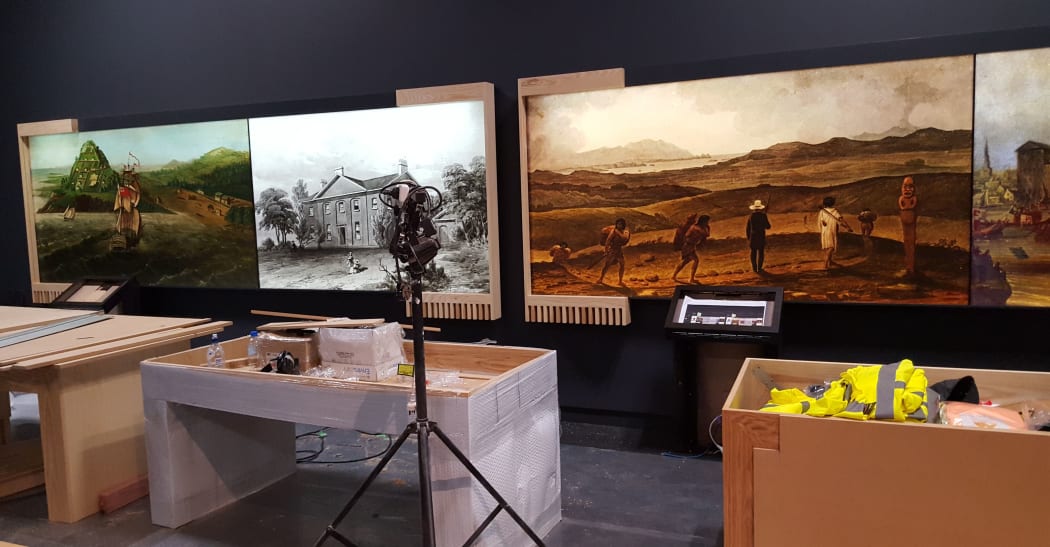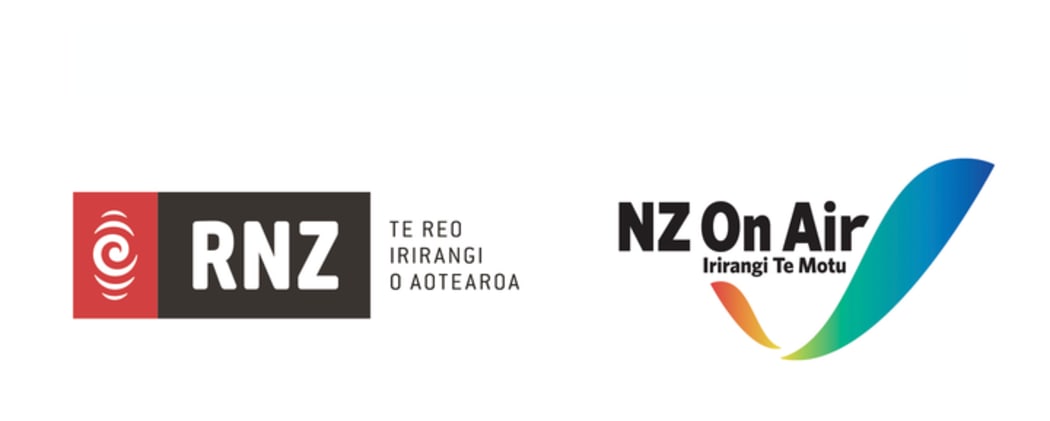
Wall panels go up in the new Waitangi museum Photo: RNZ / Lois Williams
As tens of thousands of people today flood the Treaty grounds at Waitangi, the museum there, which documents the clash of two peoples and the birth of a nation, is closed.
Curatorial Manager Caitlin Timmer-Arends says the building would simply be overwhelmed with people if it remained open. Museum staff will be busy enough, as dawn was to see the ceremonial opening of a second building housing the story of the Māori Battalion, the Pioneer Battalion and the New Zealand wars.
The Museum of Waitangi – Te Kōngahu - is not cheap. Entry is $25 for New Zealanders, $50 for foreigners, which is because it’s not government owned or run. But Timmer-Arends says that’s a good thing – it frees the museum from politics – and when it’s explained that no taxpayer funding goes into it most kiwis are happy to pay. The entry price also includes access to the Treaty House and grounds, and a cultural performance.
Inside the museum is a feast of knowledge – stories of the lives of early settlers, of Māori who were friends with British kings, artefacts including chain mail and a suit of armour gifted to warriors, documents detailing the machinations of early politics.
But there is one document that should be front and centre that isn’t there – the actual Treaty of Waitangi. Instead, a brilliant facsimile, created by Weta Workshops, takes place of honour.
The original remains at the National Archive in Wellington, deemed too fragile to move. Four years ago when the museum opened it was hoped it could be moved; the answer was ‘no’.
“Of course it should be here,” says Timmer-Arends.
But – “honestly, I would be too terrified to be responsible for the original treaty,” she says. That would involve many more layers of security, costing a great deal of money.
“It is in a very good exhibition in Wellington. It’s with the Women’s Suffrage petition as well as the (1935) Declaration of Independence.
“When we envisioned the museum we had plans for ridiculously secure display cases on the off-chance that they said ‘yes’ to us having it back. But when the ‘no’ came in … these ones are beautiful, wonderful, very secure; but they have about 15 levels less security than the ones we were intending for the original sheets.”
Timmer-Arends says the copies of the treaty sheets are of such incredible quality that it would be hard to tell the difference.
In The Detail today she gives us a guided tour, tells us some stories behind the exhibits and picks her favourite piece.
The museum runs educational trips for schools and expects to be a great deal busier with that side of its work as the new school NZ history curriculum kicks in.


